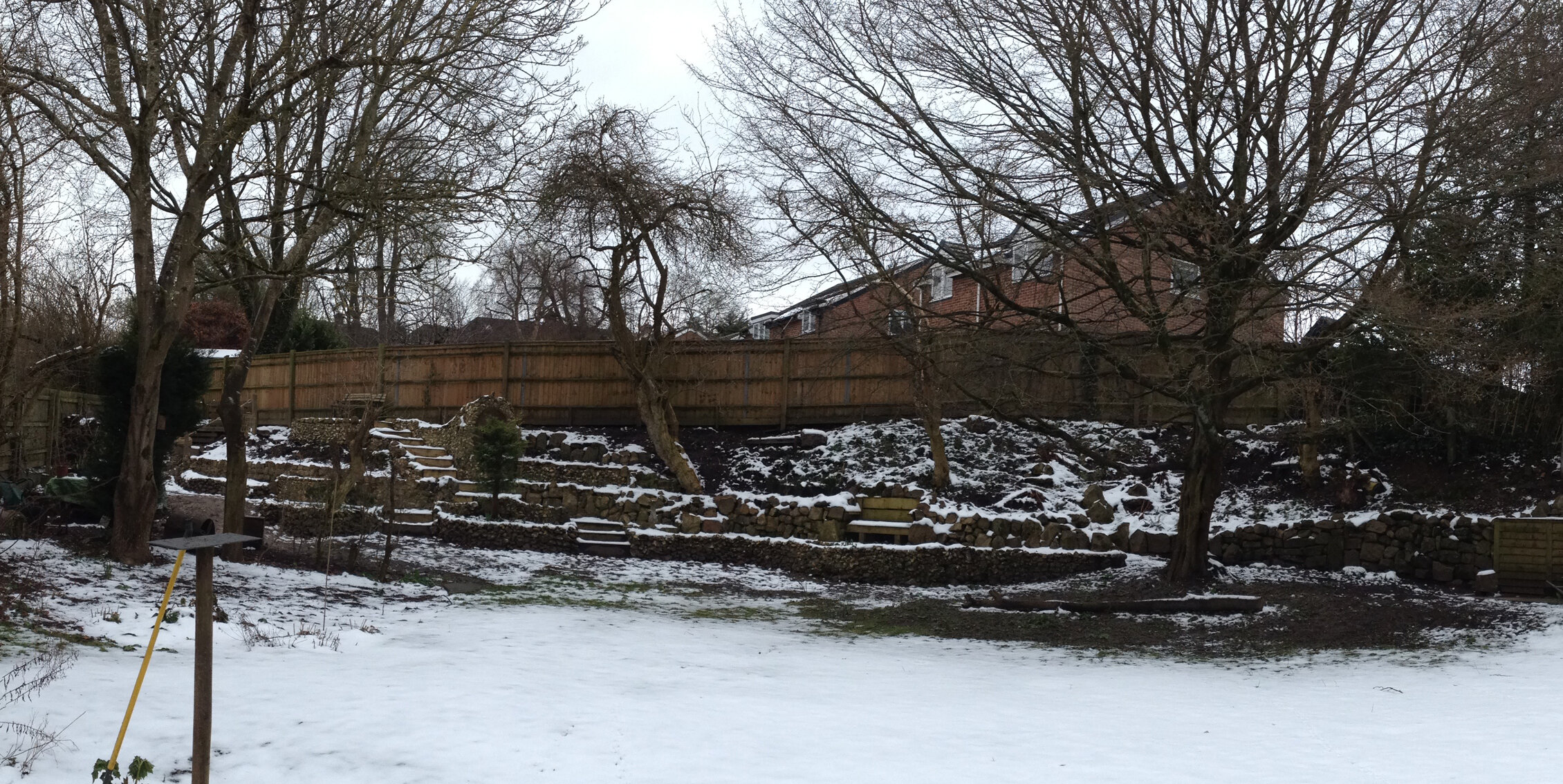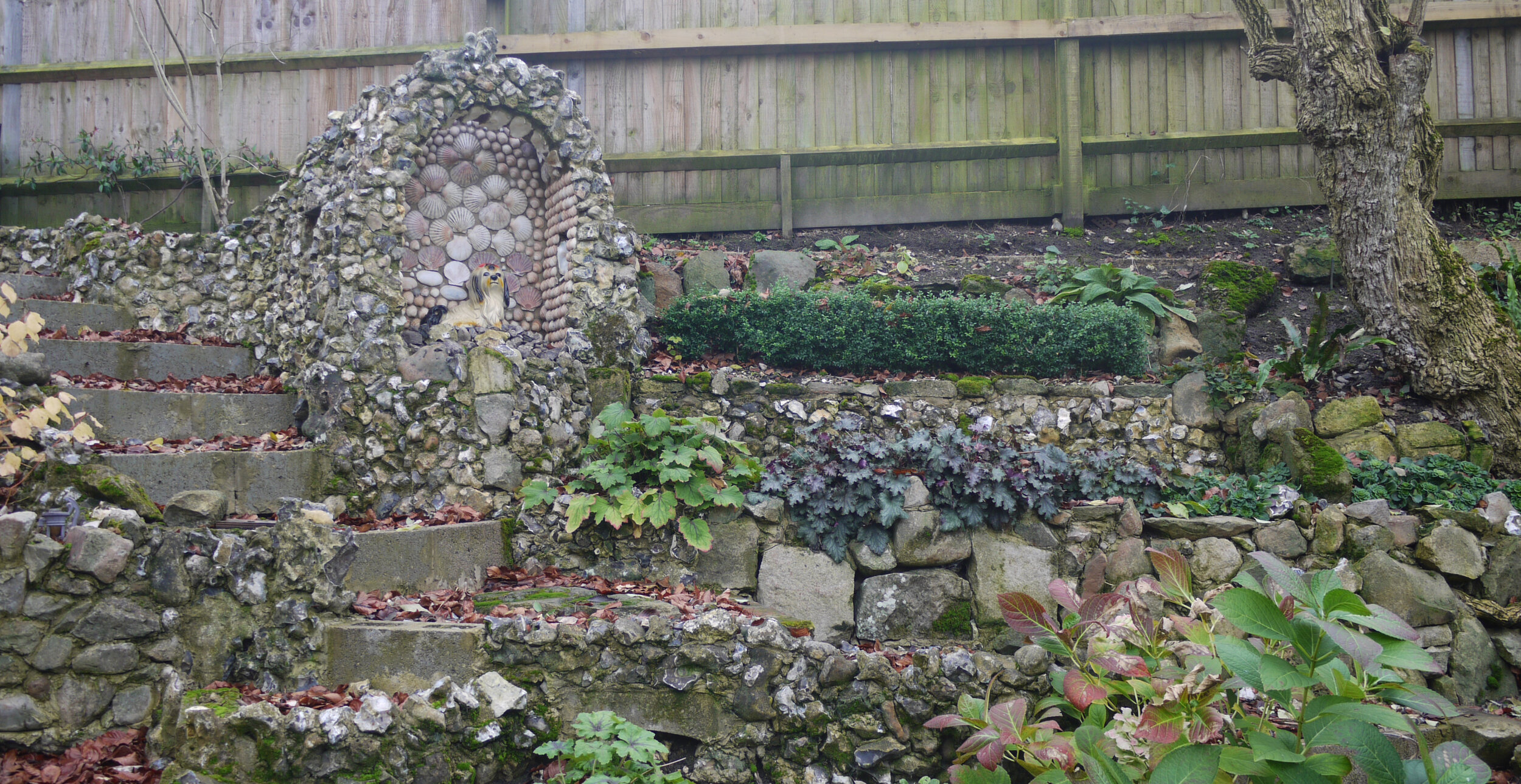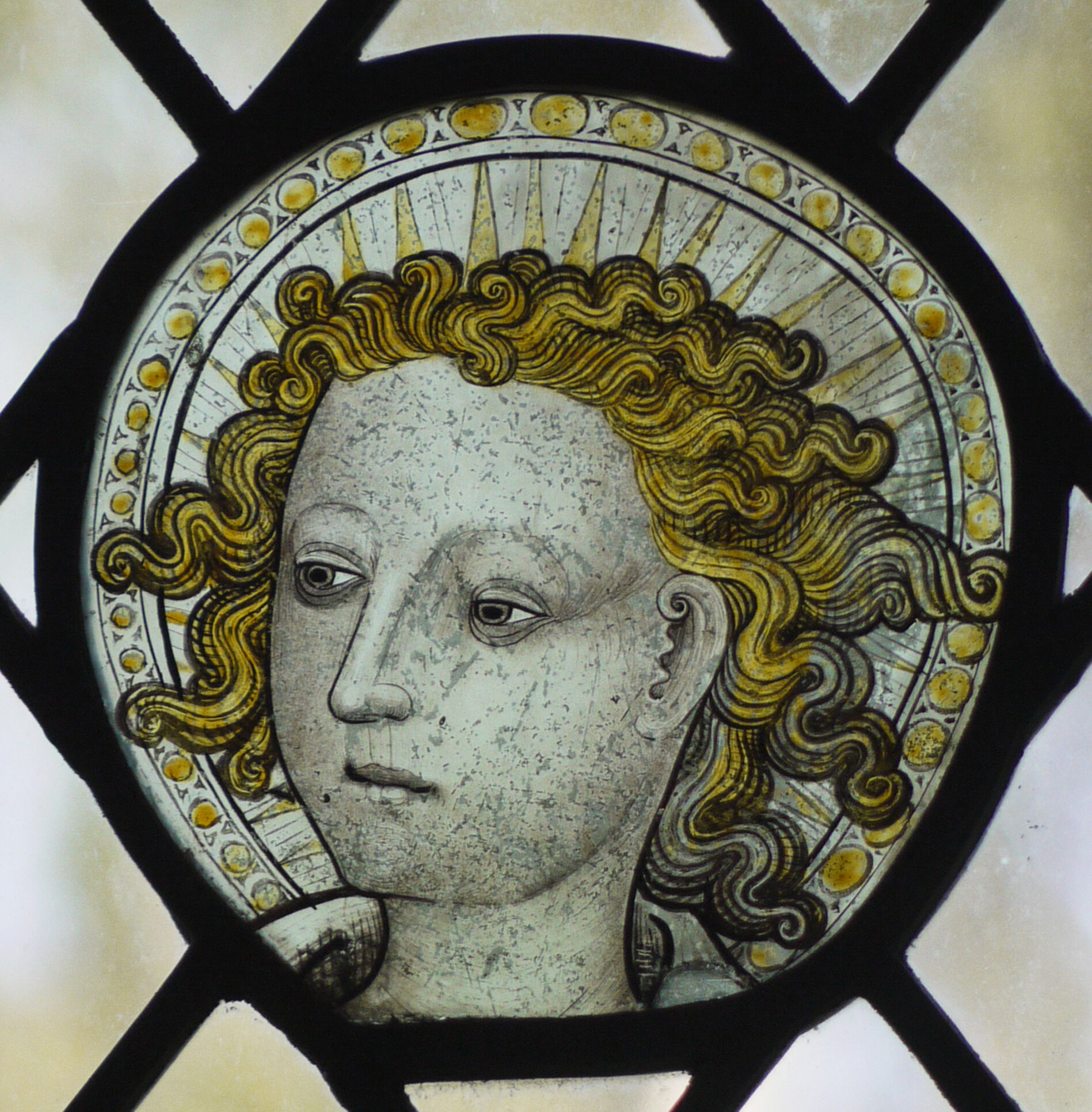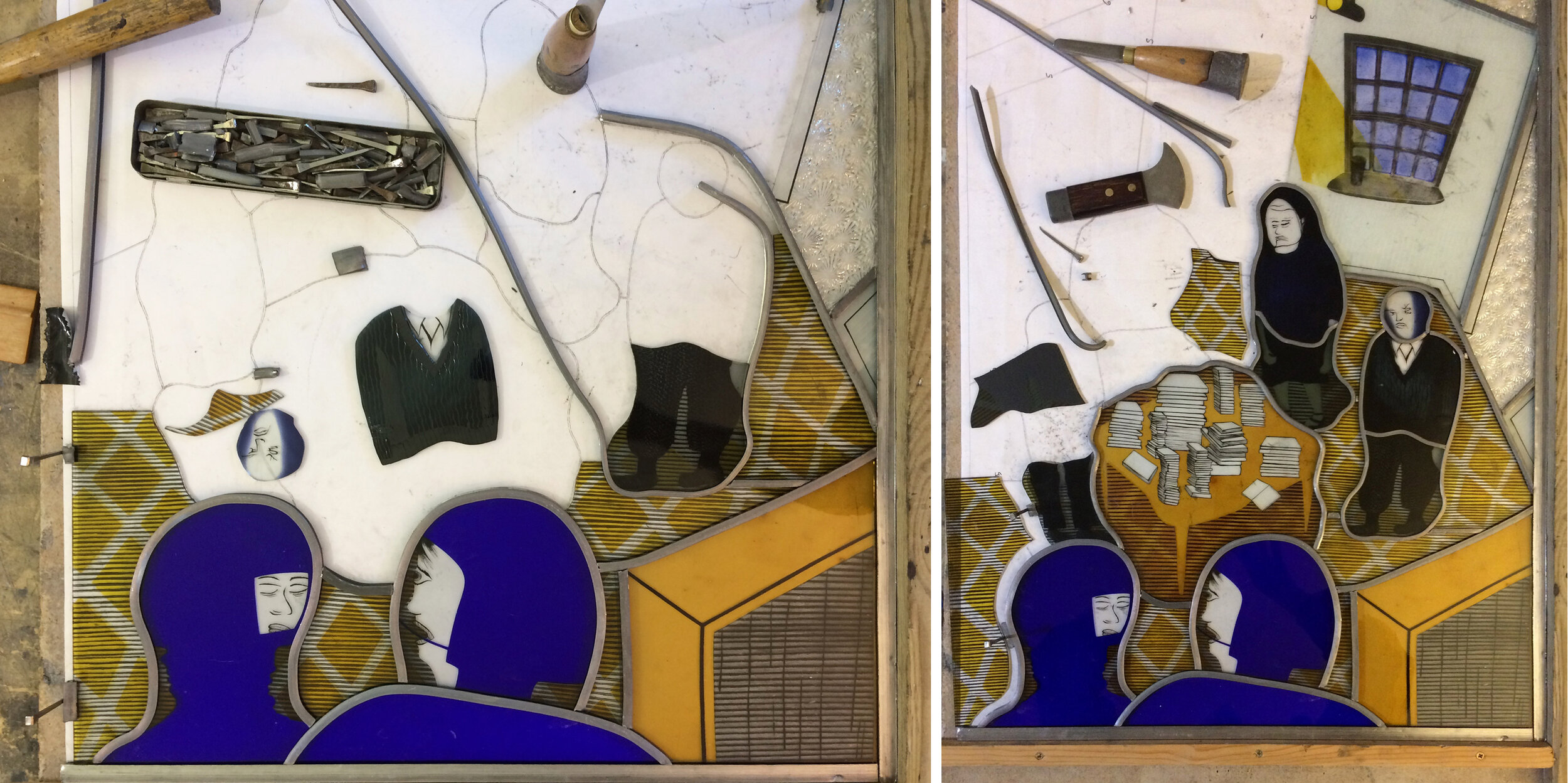This is the poster for our exhibition at Norwich Cathedral, as you can see from the dates it has just finished. Despite the lower visitor numbers to the cathedral and the extra restrictions imposed during the second lockdown we felt lucky to be showing anywhere this year. The exhibition centred around a series of panels made during lockdown when I turned some of Ray’s drawings into stained glass. Although we have worked alongside each other for over thirty years, we have never collaborated or exhibited together before.
Wall of glass: Four cabinets of glass panels with samples and drawings on the lower shelves & two larger panels on easels.
The basic idea was to have a wall of Ray’s black and white paintings meeting a wall of my coloured glass panels. These panels were the ones I made during lockdown and will be familiar to readers of my blog. At the far end were the self portraits, at the near end were the collaborative pieces, and in the middle was the series of enamelled decorative panels called "‘Theme and Variations’. On the bottom shelves were enamelled samples from previous projects which showed up well just lying on white paper and on the shelves above were print outs of my blog entries which describe the making of my glass panels.
Cabinets 1&2: Self portraits, fragments, glass paints and the start of the Theme and Variations series.
Cabinets 2,3&4. Theme and Variations and the collaborative panels.
I thought visitors to the cathedral would be interested to learn about the technical side of stained glass, as the guides and volunteers you get in such places are always more interested in a window’s history and iconography. In the cabinets I showed samples of all the types of glass paint I use (yes - it’s still called stained glass even if it’s heavily painted), the tools of the trade and a new panel in progress. I made this just before the exhibition opened and I’ve been looking forward to seeing it again as I think it may be an important bridge between the work I’ve been copying from Ray and my own artistic path (below).
Panel in Progress: Left, glass pieces cut, painted and fired. Right, in the exhibition showing the leading up process.
Wall of black and white pictures: 46 paintings in indian ink & egg tempera on gesso hanging together in a cloud.
“The pictures are written from scratch, I have no idea what they are going to be when I start. I have displayed them in groups on the wall forming clouds which you can see as a whole. But if you look harder you can always see something else in the cloud whether it is a camel, a weasel or a whale.” Ray Ward
Ray decided to hang his paintings, a recent series of egg tempera and indian ink on gesso, in a cloud formation hanging from a hidden bar where the wall meets the ceiling. A lovely shadow was created by the shape, which swayed slightly in front of the ancient stones and flints. One reason for hanging the paintings like this was to provide a space for the titles to be written up, large enough to read from a distance. Covid restrictions led to this solution which proved to be a lot better than the handouts you might normally provide as it put the words alongside the pictures, forming verses in your head:
Why are girls so obsessed with cats I really don’t think there’s much we can do. The problem is everything will be alright They’re wrong I’m more scared of success then failure. We will talk but have nothing to say The wind plays recalling madness, heartless cold reproof. Is anyone here enjoying this? An echo is not a reply.
A full catalogue of Ray Ward’s work in the exhibition can be found on his website, link here






























